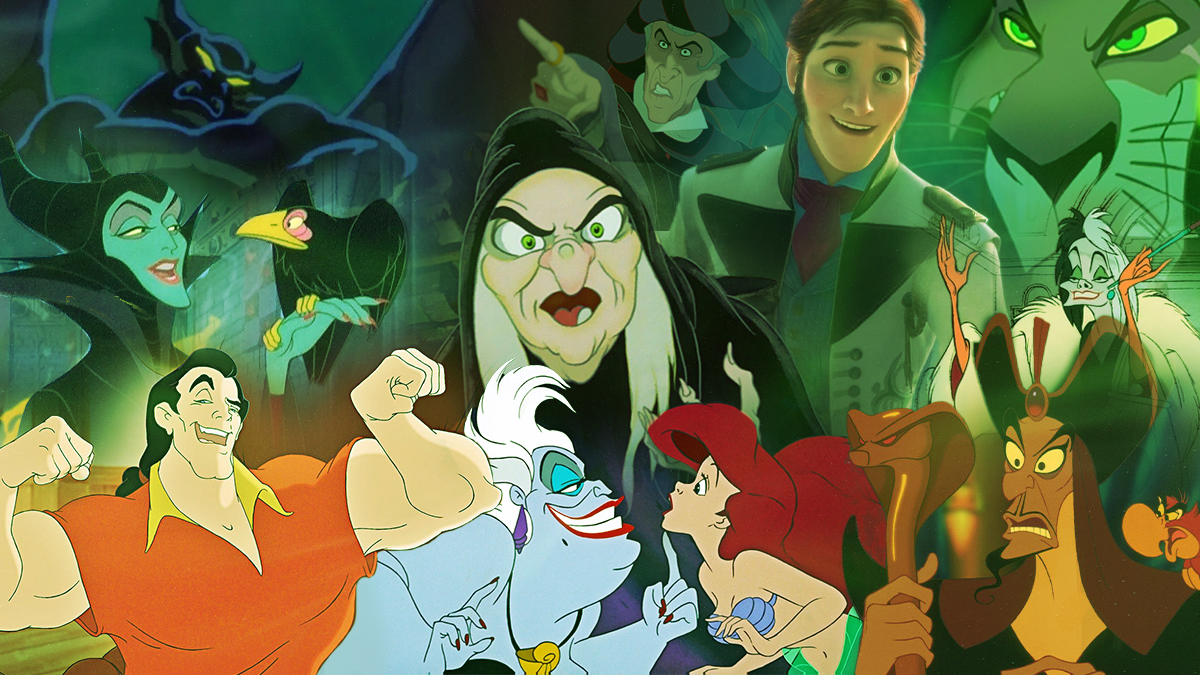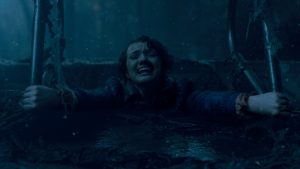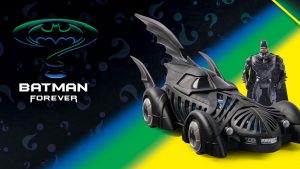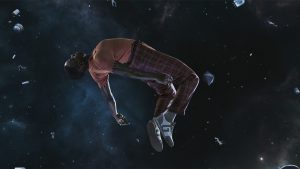
It’s been virtually 100 years to the day since Walt Disney’s animated mouse took the wheel of a steamship and steered himself into immortality. But for anyone who grew up watching Disney movies that might seem surprisingly recent. Since near its very inception, Walt Disney Animation Studios has evoked a timeless sensibility which seems eternal and everlasting. With likely your parents and grandparents growing up on Disney movies, the studio’s brand of hand-drawn magic has always been there in the background of living memory. But every magic has its dark side… and the shadows cast by the House of Mouse have always been faintly more sinister than parents remember until they put a little one in front of Snow White and the Seven Dwarfs or Fantasia. You show a child Chernabog for the first time, and I’ll show you a week of nightmares.
Going back to the days of Walt, animators have realized that the safe space created by a darkened movie theater is a wonderful place to introduce kids to elemental depictions of the macabre and insidious. These baddies appear in stories where good triumphs, and happy endings always restore order. But no one forgets Bambi’s mother. Hence why we decided to compile a list of Disney’s greatest villains and their most unforgettable animated scares. Enjoy.
Editor’s Note: We are ranking only villains created by WDAS proper and not those who were developed by Pixar Animation Studios or Disney’s various live-action labels.
12. Prince Hans in Frozen (2013)
Disney’s most recent incarnation of depravity is also one of their more sinister: the smiling nice guy who turns out to be anything but that. Frozen, in fact, received a little flack from mommy bloggers in 2013 due to this choice, with some expressing apprehension about showing children that kindly adults could be hiding ulterior motives. Yet we’d argue that is what makes Hans such an effective villain and early demonstration to children of the fact that folks may not be what they appear.
Take Hans (voiced charmingly by Santino Fontana). He’s literal royalty and is clearly modeled after generically handsome princes of Disney movies past. But Princess Anna (a wholesomely kooky Kristen Bell) knows no more about him than the audience. By design this lightly critiques the thin romance subplots of previous Disney movies, but it also provides Frozen with a villain of the most realistic sort—a person motivated by greed and self-interest who will say anything to win.
11. Mother Gothel in Tangled (2010)
The evil stepmother shtick is obviously a little overdone, especially for Disney, but somehow WDAS and directors Nathan Greno and Byron Howard made it fresh again in the first great animated Disney film of the 21st century, Tangled. Perhaps that’s because we meet the truly wicked Mother Gothel (voiced with Broadway oomph by Donna Murphy) before even her poor manipulated mark, Princess Rapunzel (Mandy Moore).
Of course Rapunzel doesn’t know she’s a princess, because Gothel kidnapped her as a baby. Gothel did this to rekindle her youth by stealing the healing powers hidden inside Rapunzel’s magical hair. That is the narrative context, but the devil is in the details: Tangled develops a genuinely toxic and abusive relationship where Gothel gaslights her daughter about how dangerous the world outside is and oppresses her with constant negging that’s interspersed with meager sprinklings of feigned affection. The dynamic is less Cinderella and more Mommie Dearest. Pretty twisted for a movie with a frypan-wielding horsie, nay?
10. The Evil Queen in Snow White and the Seven Dwarfs (1937)
Often a classic is a classic for a reason, and the Queen in Snow White is the O.G. when it comes to offering a visage in evil. However, her whole brand is about visage, with this wicked stepmother figure staring vainly into a magic mirror, constantly looking for reassurances that she’s the fairest of them all. And when the next generation threatens to rise up via some upstart named Snow White… well, there’s an answer for that too.
There are few children who didn’t have nightmares when the Evil Queen used magic to assume the shape of an old crone and offer poor Snow White an apple. It’s archetypal cruelty, and the way that creeping smile is drawn to slowly crawl across her face is still an ordeal in its own right.
9. Frollo in The Hunchback of Notre Dame (1996)
Disney’s The Hunchback of Notre Dame can be rightly criticized for attempting to adapt a work too complex and too adult for either Disney’s target audience or the company’s storytelling sensibilities. Nonetheless, even in this overly simplified form, the villain Frollo (voiced with an unsettling sense of righteousness by Tony Jay) is still one of the most believably human villains in the Disney canon. Which is probably why he is even more disturbing to watch as an adult. Based on a character who is lecherous priest in the Victor Hugo novel, Disney’s Judge Frollo is still a convincing approximation of absolute power’s corruption, and how self-serving zealotry can curdle into something skin-crawling.
Out of obligation, Frollo raises Quasimodo (Tom Hulce) from a distance, but his attentions throughout the movie are wholly fixated on Esmeralda (Demi Moore), a dancing gypsy girl whom he covets. The best song in the movie, in fact, is old, gray Frollo’s chilling confession to the flames that he is besotted with lust for the young woman, which transforms from desire to disdain. Like so many other men of religion, he blames a woman’s existence for his own perversions and failings. Frollo might think he’s singing to God, but the song “Hellfire” knows exactly where this character is headed, and unnervingly clued even children in to the creepiness of old men who hide their depravities behind a holy book.
8. Ursula in The Little Mermaid (1989)
It may be Disney’s worst kept secret that Ursula in the original The Little Mermaid is based on the drag queen Divine, but at least it helps explains to one and all why Ursula is so undeniably fabulous from the very first moment she slithers across the screen. Half octopus and 100 percent scene-stealing drama queen, Ursula is the corpulent sea sorceress who laments in her first scene that she’s “wasting away,” even as she schemes to seduce a mermaid named Ariel (Jodi Benson) into giving up her voice for a pair of legs.
Voiced by Pat Carroll with a performative degree of camp, Ursula’s own vocals curl like tentacles around turns of phrase, such as “and don’t underestimate the importance of a body language!” Animator Ruben Aquino finalizes the effect by drawing Ursula as a reigning diva who demands you put some respect on her name.
7. Cruella de Vil in 101 Dalmatians (1961)
Cruella de Vil is a woman who wants to skin literal puppies in order to create yet another fur coat for herself. That’s it. There’s no depth or backstory, or a hidden and greater motivation lurking beneath the surface (at least in animation). Cruella is only about the surfaces, and that’s what makes her one of Disney’s evilest creations.
The people who brought her to life also had a lot of fun. Voiced by Betty Lou Gerson, Cruella is animated to be a pernicious skeleton that for some reason still has its skin and glowering yellow eyes staring out at you. The inference is that no matter how high her fashion gets, her soul remains hideously rotten, but frankly she’s just a joy to watch. Even one of the men she dognapped from couldn’t begrudge her that style. Indeed, Roger Radcliffe wrote her a superbly ear-wormy jingle.
6. Jafar in Aladdin (1992)
Jafar is the only one of the great Disney Renaissance villains without his own song, which might be the single glaring misstep in one of the company’s best films, Aladdin. But even if Broadway veteran Jonathan Freeman is just given the scraps of reprising one of Robin Williams’ ditties, he, much like Jafar, makes a meal of it. Intentionally designed by animator Andreas Deja to be a kind of male counterpoint to Maleficent, Jafar is an undeniably intimidating sorcerer whose slight frame can be mutated into the most hideous of shapes. Yet there is something distinctly original about Jafar too.
Thanks to Freeman’s utterly drool comic timing, there’s a dry sense of humor which makes Jafar’s scheming with parrot Iago (Gilbert Gottfried) endearing and curiously camp. At the same time, the vizier’s patrician sneer toward our hero, the plucky street rat Aladdin (Scott Weinger), keeps his nastiness front and center before turning truly sinister in the third act. Few Disney villains are as seriously threatening as this literal snake by the end of the story.
5. Chernobog in Fantasia (1940)
If Frollo is Disney’s most dreadfully human evil, Chernobog is the company’s most elemental and Jungian. Based on old Russian legends about demonic revels that allegedly occur on a hill called Lysa Hora in Ukraine each June, Fantasia’s “Night on Bald Mountain” adapts folklore as well as 19th century composers Mussorgsky’s apocalyptic sounds of Hell for what amounts to the most ambitious animated segment from Walt’s time at the company.
In Disney’s “Night on Bald Mountain,” Chernobog is Satan in all but name, a demonic force which rises from the peak of his mountainous abode like a feral bat erupting from the mouth of Hell. Chernobog declares war on Heaven, God, and goodness in what was the original WDAS’ most perverse animation. On a purely visceral level, the lines drawn by animator like Bill Tytla to create Chernobog is as monstrous and terrifying a creation as Disney has ever seen.
4. Man in Bambi (1942)
We never see the face of the hunter who kills Bambi’s mother in Walt’s classic 1942 film. And we never need to. The implicit accusation at the heart of Bambi, which is so forceful that even a child can hear it being leveled, is that the killer is staring at you every time you look in the mirror. Bambi’s mother is murdered by Man and all his works, whether as a game hunter who thinks killing deer is sporting or by all the enterprising opportunities that invade and destroy the natural world.
The last we see of Bambi’s mother is a face full of desperation as she tells her son to run and not look back… which he doesn’t until after it’s all over, and his father has arrived to tell the fawn that she’ll never be by his side again. It’s one of the most effective storytelling choices in the Disney oeuvre and to this day will bring a tear to the eye of any child, or child at heart, who can recognize their own culpability.
3. Gaston in Beauty and the Beast (1991)
Fun fact: While developing the villain in the first Disney animated film to be nominated for Best Picture at the Oscars, WDAS’ artists decided amongst themselves that Gaston was the man who killed Bambi’s mother. While this is not canon, the thematic connection is there when Gaston croons, “I use antlers in all of my decorating!” It also gives a perfect face to man’s arrogance and sense of entitlement.
Voiced with a thick baritone by Richard White, Gaston is initially a caricature of a certain alpha male type you might recognize, be it in provincial France or just in a high school football letter jacket. However, as Beauty and the Beast goes along, Gaston reveals himself to be a truly nasty piece of work, which was a breakthrough for the company’s depictions of villainy up to that point. There is nothing supernatural, silly, or camp about this guy. He’s a mean, self-centered egotist who gets brutal when denied what he thinks is his by rights. It’s a portrait of evil that speaks loudly to our own times, particularly in the third act where Gaston turns to scapegoating and othering someone (the Beast) in order to stir the prejudices of fellow small minds in his village. By the end, he’s just a mad-eyed little man holding a big knife, seething because he didn’t get his way.
2. Maleficent in Sleeping Beauty (1959)
Maleficent is the kind of woman who when she gets snubbed from a party invite doesn’t just crash the event anyway, but decrees when she gets there that in 16 years she’ll also murder the host’s newly born daughter. You know, as a birthday present. That’s the most stone cold villainy we’ve ever heard of. Which also makes it darkly funny Disney tried and failed to turn this sorceress into a misunderstood antihero 50 years later. The real Maleficent is nobody’s hero, and that’s why she remains the most iconic baddie in the Disney storybook.
Richly animated in lush colors and intricate detail, Sleeping Beauty was overseen by American artist and illustrator Eyvind Earle in order to evoke the pre-Renaissance tapestries and paintings of the late Middle Ages. The artistic ambition informs why Maleficent is herself so visually dazzling. Her inky black colorings spontaneously erupt into sickly green-and-yellow hellfire. It’s an unforgettable aesthetic that is heightened ever more by actress Eleanor Audley’s pitiless cackle. This is a character who from head-to-toe is mesmerically evil because she enjoys it. So when she turns into a dragon at the end, the impulse of every child is to look away or maybe flee the room.
1. Scar in The Lion King (1994)
For moviegoers of a certain age, seeing Mufasa tossed to his death was the defining childhood trauma endured at the movies. The sequence is obviously operating on a base, primal level, taking inspiration from Shakespeare and Norse mythology about uncles who kill brothers, thereby usurping nephews. But in practice it is just plainly visceral cinema to have Hans Zimmer’s pounding score go silent, pausing to let shadows creep into the frame until a false lighting causes the slimy green eyes of Scar to shimmer. “Long live the king,” he hisses. And so the deed is done.
Jeremy Irons brings a leathery refinement and texture to Scar’s vocals, giving the covetous uncle a simultaneously regal yet rasping purr. An actor who knows how to sip and swirl on a line until we can all scent its aroma, Irons is usually a delight to listen to as Scar, whether it be when he’s slyly mocking his nephew Simba or belting “Be Prepared,” a song that revels in its perversity. But beneath it all is a glittering ugliness that reaches a boil when Scar murders his brother. It gives The Lion King its operatic heft. It also makes the character an unforgettable wretch.
The post Disney’s Best Animated Villains Ranked appeared first on Den of Geek.





